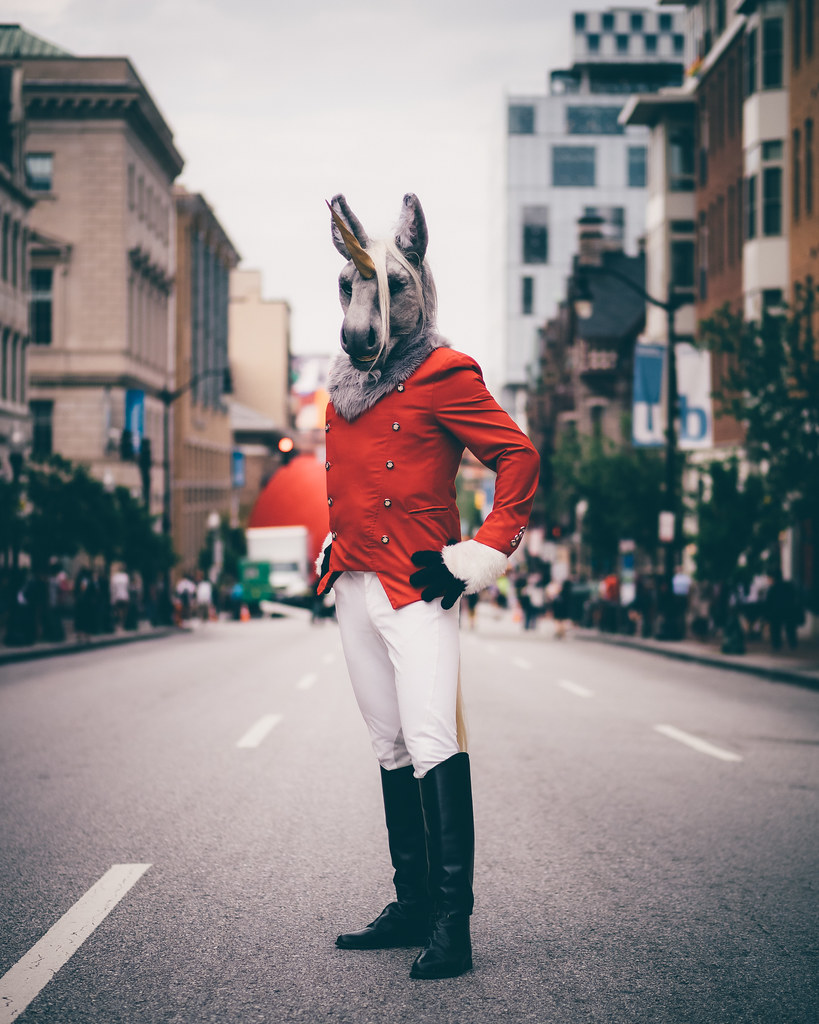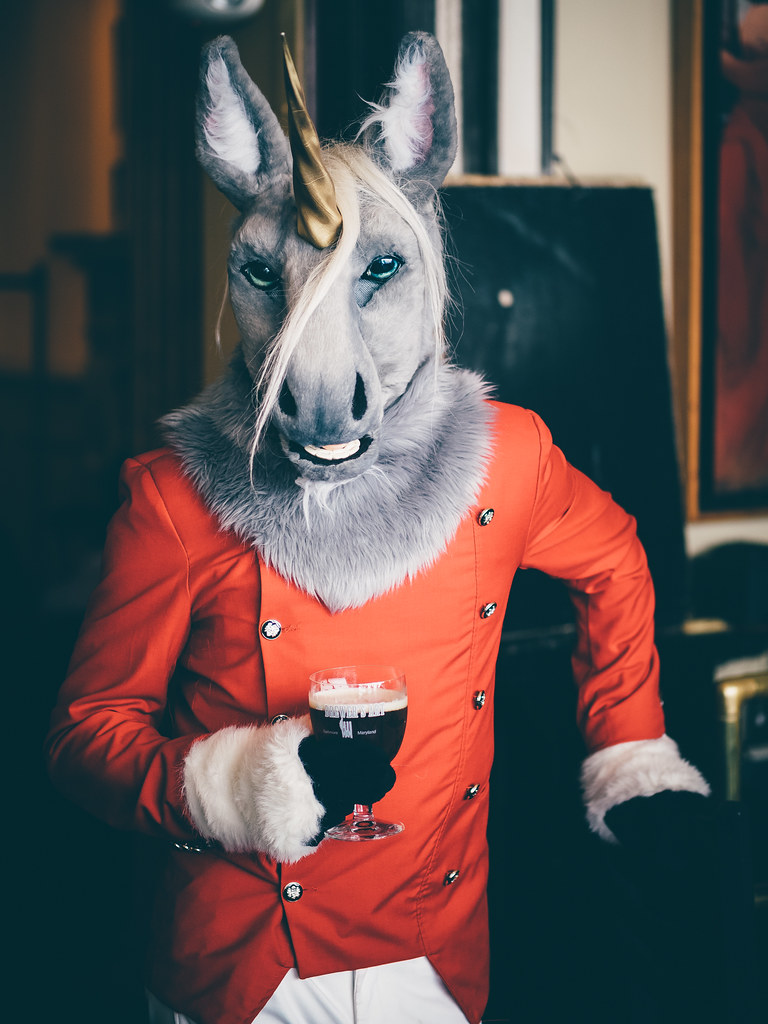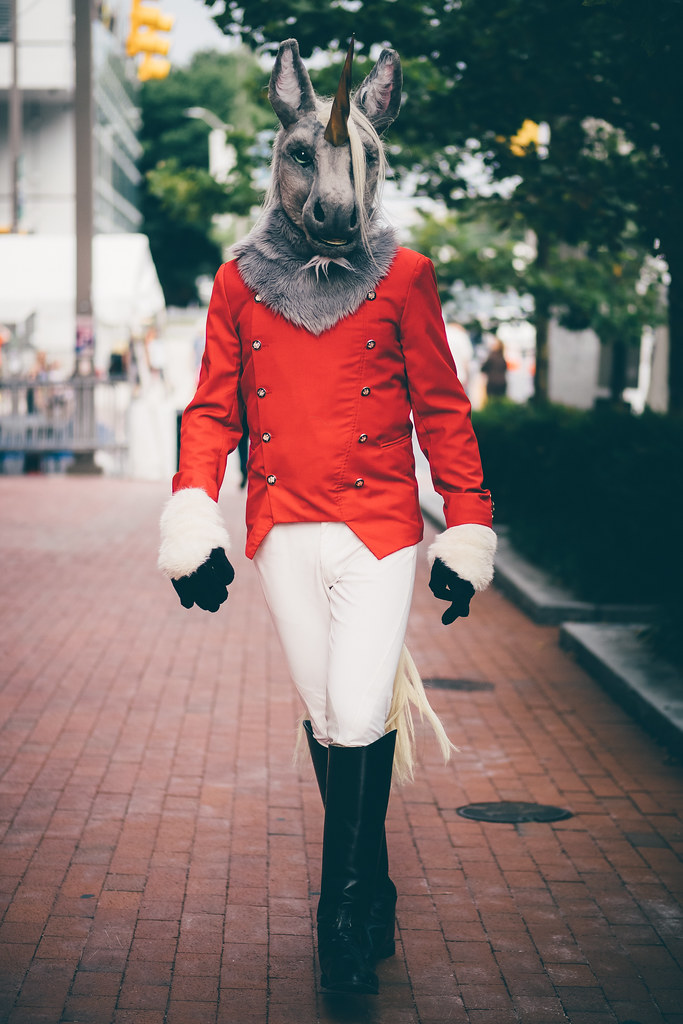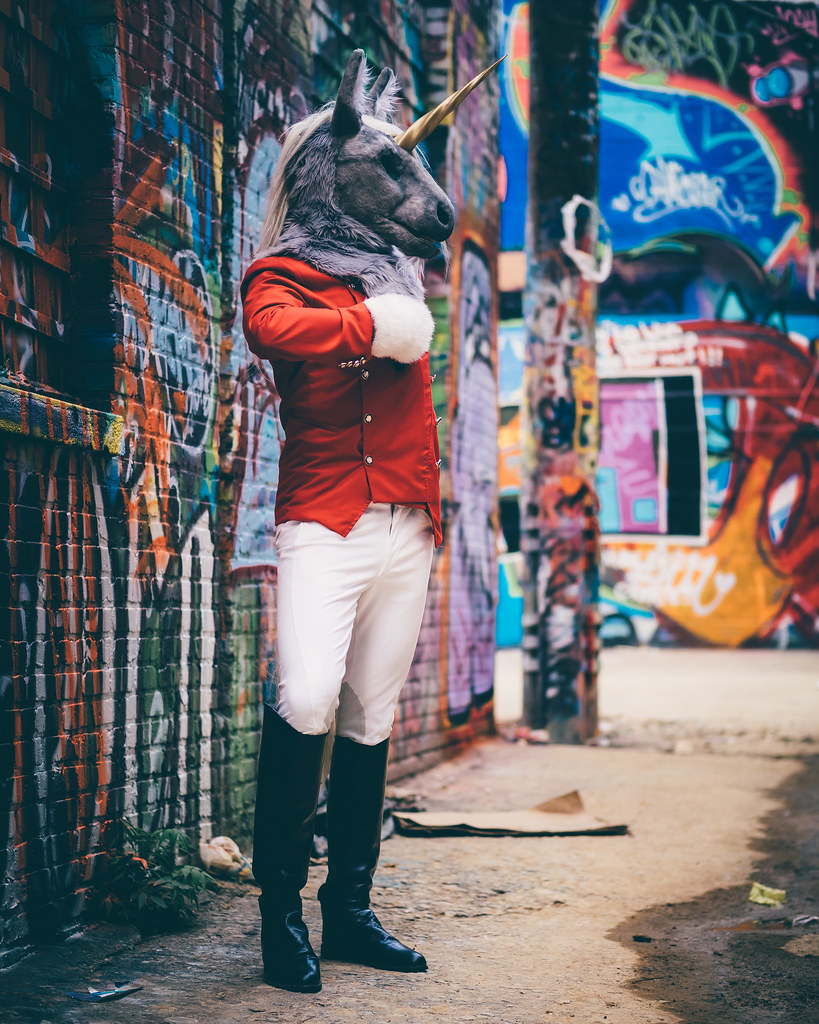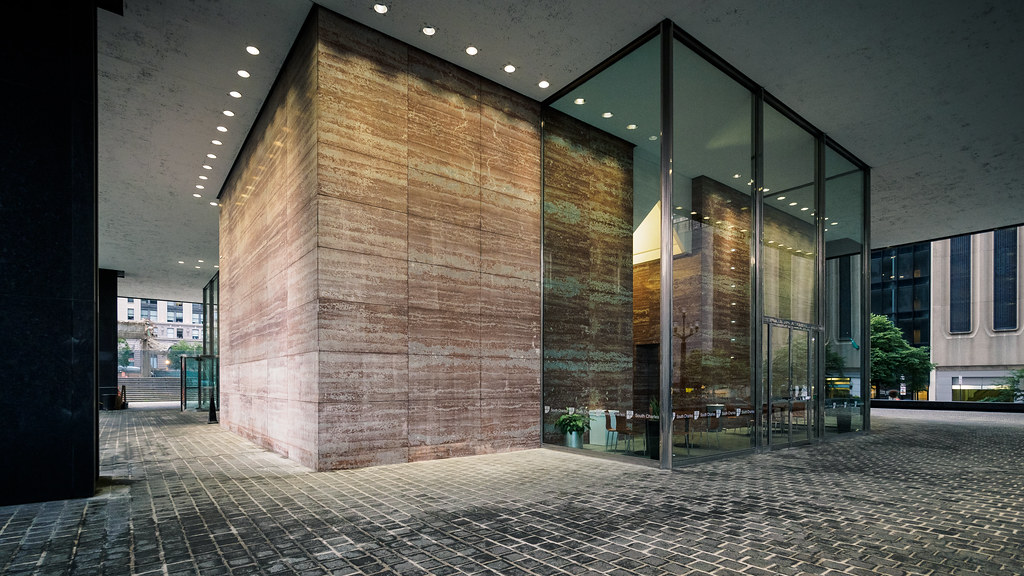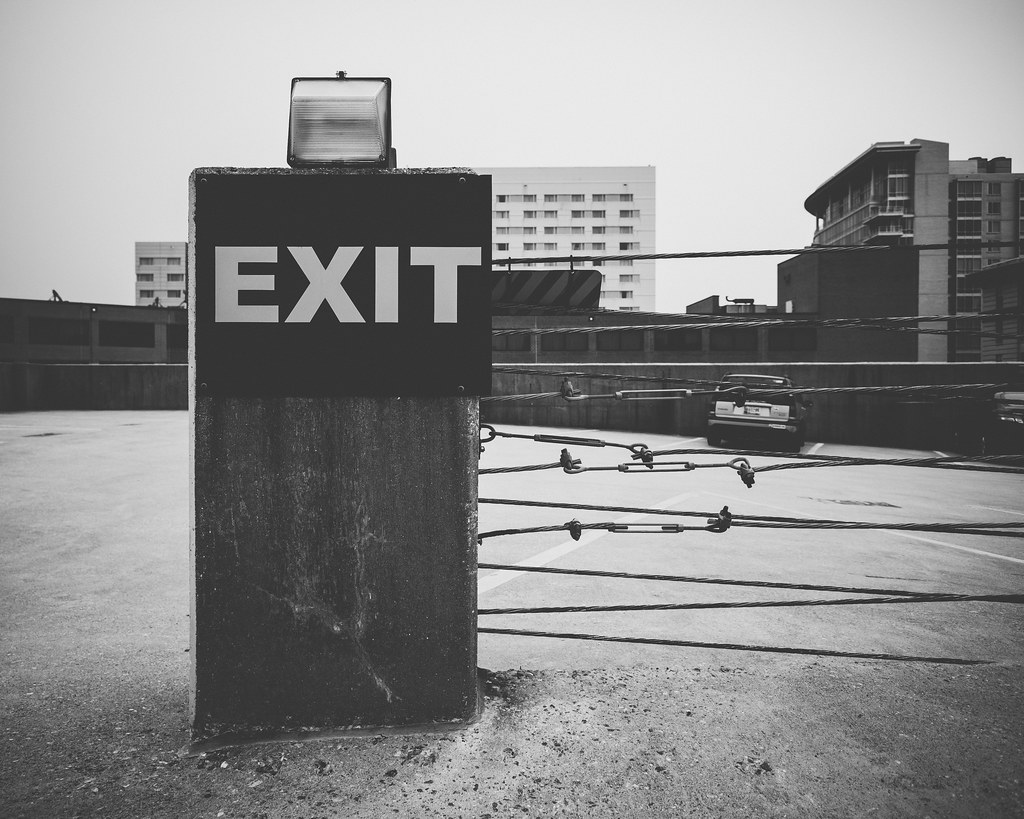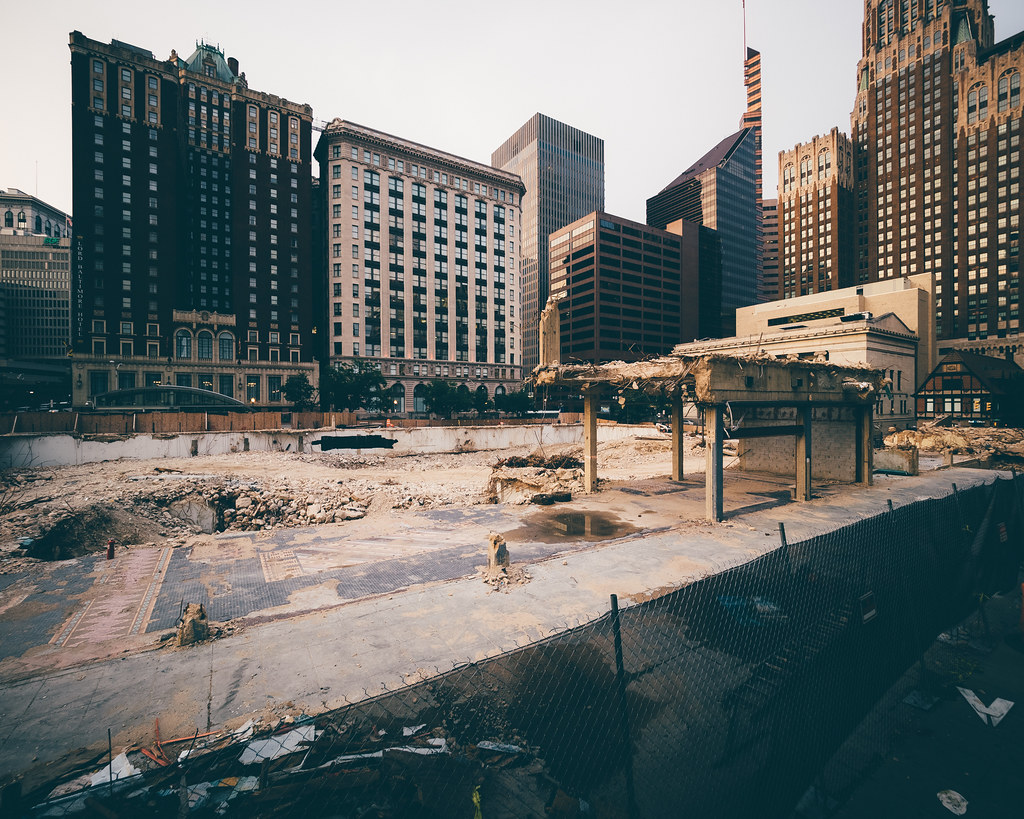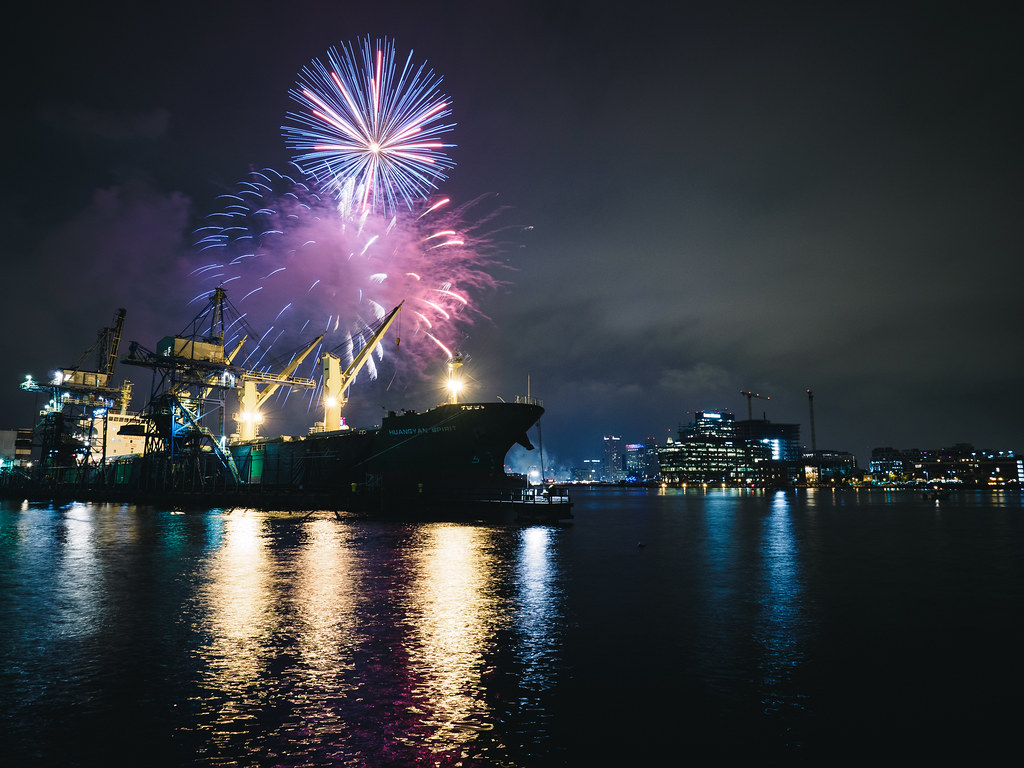Tuesday, July 28, 2015
Severe Burnout
I've been getting to this point too much this year. Almost catatonic from exhaustion due to unrelenting activity on every front. Possibly still driven forward by momentum, but ultimately losing all will to continue running this sprinter's pace. Lowest priority areas of life begin to suffer, quickly joined by their brethren less-important duties and sense of responsibility, until it piles up into a mountain set to match the magnitude of one's idealized undertaking, suddenly making it so much less appealing an objective to strive for.
Not quite at that latter point yet, where failings match accomplishments, but I can feel myself getting there much earlier this year than ever before.
Arguably it's a great problem to have, or so everyone insists it is and thus it has become my foolish mantra to keep motivated and running, always running. Still stable and steady in the classic 9-to-5 job (although always feeling like I'm failing to fulfill some duty in some way, perhaps because there isn't actually enough work to keep me 100% engaged for what seems an arbitrary 9 hour day). Bread and butter work with contracted real estate ventures are unendingly steady, maybe even easy for the level of effort expected under my contract. Independent work with new clients is booming, with weddings, private real estate work for management firms and investment groups, portrait sessions and band photography and open house events and stage shows... It doesn't stop. Every day I come into the office to work the safe, secure, tried and true 40-hour work week, but someone, somewhere, calls upon my services in an inescapably slim time frame that ultimately interrupts the normal pace of the work week and always leads to exsanguination of time off. My vacation days aren't spent on vacations, they're conveniences that allow me to leave one job early to go work another. A trend that began last year and has only solidified as a new status quo in my working life.
And I'm tired.
I'm editing shoots from the weekend on my evenings during the week after a 9 hour day of office droning, fighting with software and swearing under my breath for lacking support for new tools (seriously, DXO, please get that M. Zuiko 7-14mm f/2.8 lens module out soon). Until midnight each night I edit, reset, edit again, reset again, sifting for "looks" that work for the client until finally slapping together the best I can and shipping the package over some cloud service that takes another hour to complete the upload. Up again at 7:00AM the next day, this time burning through 4 hours of time off for a "quick" shoot in Baltimore or DC, or a dentist appointment, or a vet visit (pet bunnies, you know). I try to make up the hours later in the evening, but the building closes and I'm nowhere near made up for the time I missed, so more time off goes out to make up for it. The weekend comes and my friends are thrilled to have BBQs or go out to the bar or go hiking out west toward the mountains, but I can't join them because I'm running contracted shoots from 10:00AM until 5:00PM the next day, driving from Baltimore to DC to Annapolis in a sloppy route that costs too much in gas and is insufferably hot in my AC-broken-for-6-years car (aptly nicknamed "The Toaster"). Sunday it's the same thing, only there were accidents on all the major highways so I don't get home until 7:00PM that day.
Sometimes I drive out to my Mom's place in Virginia if I end my Sunday tour on the west side of DC (an extra hour drive, but it's the most opportune time to visit her and she calls, missing me, pretty often). I want to talk with her, have conversations about life and where we are and how much I miss her and don't know who she is for sure anymore and am pretty sure she feels the same way, not knowing who I am either. But my brain is fried, I've been running around meeting clients and running shoots in the blistering heat for days and all I can do is sit on her couch and focus on Business Stuff because that's all that's been running through my head for months. I get home around midnight, edit photos from the day's shoots until 1:00AM, decide "This is stupid" and pass out alone in bed because my boyfriend has been stuck sleeping nights with a non-conformist body rhythm, so he'll slip into bed right when I get in the shower and for all intents and purposes I won't see him at all. Not just for that night, but for days.
I'll work Normal Office Work the next day, get home, realize I'm spending the evening alone, and rationalize staying home and drinking too much as the better, the safer option, rather than call up a friend or venture out to the same tired places I've photographed a million times on my own. I'll punch at photos in a drunken nostalgic stupor and suddenly feel like a million bucks, maybe post one or two images edited in this inebriated clarity on Flickr, get pissed off at the glitchy and cumbersome groups system, play a round of Hearthstone, get tragically stomped, then trudge into bed without even brushing my teeth. I'll sleep in late because the alarm is twitchy and doesn't go off reliably, shower and rush out the door for more Normal Office Work, then suddenly feel crushed under the weight of obligation throughout the day as dozens of emails pour in inquiring about my availability to photograph XYZ specifically within the window of Normal Office Work business hours. I'll capitulate, stick a reminder in my schedule, and get ready to hemorrhage more time off to make more money than those hours would otherwise be worth doing this little side job, forgetting to account for the hours I'll spend that evening editing things and losing what little time I have to spend with my boyfriend in the process.
This level of activity happened twice last year, once in the Summer (but not quite as heavily) and once in the Winter (which set a new baseline for the amount of stress my body and mind are able to tolerate). Every year has seen a lull around February and March, but that lull this year was more akin to a return to what I considered "normal" business activity levels. Things picked up in full force by mid-April and have steadily augmented in intensity since. Steadily may be the incorrect word. Exponentially sounds more realistic as it relates to the volume of labor involved. I've taken one actual vacation day for a trip to Pittsburgh a couple weeks ago. I paid for my audacity in taking a vacation by pouring my time into "make-up" photo work during the work week, staying as late as I could upon returning to the office to make up for time lost but still never quite getting to that golden 40-hours. I've gotten sick twice this year, which is supremely abnormal for me, and both times it was bad enough to land me at home for a week after a doctor visit, again a rarity for me. My body is responding in kind to the stress I've applied to my mind.
I write blogs a lot more when I go through these periods of extreme stress. It's an incredibly helpful medium by which to release the pressure, like screaming into an empty room. And right now exactly what I need is a good scream. There is no point to this post other than to reverberate the walls with a cracked and squealing scream that sounds curious like the furious stamping of fingers on keyboard keys. But that's okay, because already I'm feeling a little better having stamped those keys through the plastic and down to the desk, leaving little imprinted letters in their wake.
Might my situation be a scenario from which to learn for you budding workaholic photographers out there. Pace yourselves, and do it both actively and with regular rhythm. You are useless once you've burned up into a sad and stupid pile of ashes, scattered to the wind like you never even existed.
Monday, July 20, 2015
Panasonic Leica 42.5mm f/1.2 DG Nocticron, or "The Joy of Subject Isolation"
First, a little backstory
It's nearly been a year since first acquiring the Olympus E-M1 paired with its quite fantastic kit 12-40mm f/2.8 PRO zoom, and it seems in general that this past year has been marked exclusively by similarly stellar PRO badged zoom offerings. All of which are great optics, and extremely useful and even gorgeous in rendering of scenes, so please don't allow my ensuing love affair with the abstract magic of an off-brand (not really off-brand, just not Olympus brand) prime lens suggest disdain toward those remarkable zooms.You see, prior to those PRO zoom offerings, I was exclusively a prime lens shooter for years, ever since 2008 when I picked up the Nikkor 35mm f/1.8 G DX lens for my old workhorse Nikon D40X. It only ever took that one lens to set me on the elitist track of prime optics fanboyish-ness, and since then my kit had always been an assemblage of ~f/1.8 lenses at fixed focal lengths between 12mm and 45mm, at least until August of 2014. Once the strengths of Olympus' line of PRO zooms sank their teeth into me, I made it a goal to relearn how to shoot with zooms (a lot harder than one might realize after spending years refining skills in fixed focal lengths). For purposes of photography-for-work, it was a critical skill to refine given the fluidity of working photographic endeavors. But the last 2 weekends hadn't seen a tremendous amount of photography-for-work. Instead, it was all road trips and casual outings and the remarkably fun time I seemed to have lost sight of somewhere down the road in becoming a photographer-for-hire with good business sense. And very quickly I yearned for the refining limitations of a strong prime lens, a tool to slow me down and consider the scene prior to snapping a single frame.
I frequently run with the M. Zuiko 17mm f/1.8 on the E-M1, easily one of my favorite prime optics for the vast majority of situations. The backup PEN E-P3 typically keeps an M. Zuiko 45mm f/1.8 on it at all times when a greater sense of subject isolation is called for. These primes have been in my kits for years, and like all things that become regular staples to one's routines, they are a little stale to my eyes. Rob, my friend and regular counterpart in photography excursions, picked up the Voigtlander 17.5mm f/0.95 a couple months back, and seeing his results with that lens never fails to impress me. With his keen sense of composition, the kind of soft and smooth falloff of focus and sense of subject isolation have me salivating every time I see a new image hit his gallery. It was that kind of subject isolation I really wanted translated in my images, and with the limitations due to sensor size of the Micro Four Thirds format I knew it would never come without investment in some ridiculously fast glass like the Voigtlander series of f/0.95 optics.
Or... a rather quietly heralded optic from the other side of the MFT fence, in the Panasonic realm. I remembered much excitement over the Panasonic Leica 42.5mm f/1.2 DG Nocticron, nearly as much as I remember the legions bemoaning a poor value proposition from the cost:benefit standpoint. Indeed, while reviewing the lens through the experiential retellings of Tyson Robichaud and Steve Huff, the lens was the stuff of dreams ever outside the reach of the hobbyist or amateur for sake of price, especially for a prime (at least when the value prime propositions in the MFT field are so dauntingly numerous).
My situation today is very different from even a year ago. Once upon a time I fit into that hobbyist amateur category, and such belligerent notions as dumping $1600 into a lens... I couldn't have done it if I wanted to. Very quickly in the last year I seem to have crossed a threshold in the business sense, wherein one finds himself unexpectedly making too much money and faces tremendous consequences come tax time should he not be able to spend it fast enough to compensate. Most people say it's a good problem to have, but it's certainly a weird one in which conventional thinking and approaches to business budgeting become encumbering anxieties.
The point of divulging this bit of detail is to explain the frame of mind necessary for me to personally justify the expense required to attain this lens. For the MFT format it is extraordinarily expensive, and acquisition of new equipment always pairs with perceived risks regarding whether or not the new gear will satisfy the needs for which it was acquired. This lens would have never entered the scope of reason were it not for the fact that I am looking for places to invest my photography earnings. What I am coming to learn, however, is that once one has matured a taste for a style of image, adhering to the tenets of value propositions is absolutely foolish, and an unnecessary setback to the realization of potential. I let this lens pass right through my field of awareness when I saw a price tag I considered too high. I should have had a pre-order in the second it was announced.
Now onto a review-by-experience of the lens
This weekend, Baltimore held its annual Artscape Festival, famed for being the largest free arts festival in the United States with some 350,000 attendees to peruse and purchase the works of local artists and enjoy the concert-like festivities held across several city blocks. As long as I've lived local to Baltimore, I'd never attended the festival despite always having interest in indulging Baltimore's unique affinity for the arts, especially of the fringe, generally weird variety. A friend and enthusiastic performance artist expressed interest in a bit of costuming at the event Friday evening, and requested I join his troupe to photograph both his character and candid reactions of people on his parade through the entirety of the venue. I was more than happy to oblige, and the opportunity to put the Panasonic Leica DG 42.5mm f/1.2 to appropriate test encouraged a fiendish overnighting of the optic to my address by Friday morning.
The inevitable first impression of the lens is of size and weight. The thing is simply massive for the format, very wide and with a large front element that makes me thrilled to have a lens hood to put over it for protection. Assembled with the hood and on the E-M1 with vertical grip, it looks like it should fire some sort of projectile ordinance, which may be inconsequential and extremely shallow a judgment of appearance but it's no doubt empowering to the brain of the typical American male. Burdened with so much glass and encased in sturdy metal housing, it all but pulls the camera body to the ground, clearly eclipsing the body, even with vertical grip and extra battery, in weight. Thus it is slightly less balanced in use, but nothing unresolved by supporting the lens where the hood affixes to the chassis. Suffice to say, it is as formidable an optic on the E-M1 as the M. Zuiko 40-150mm f/2.8 PRO zoom, only condensed as if the zoom were squished down into a tighter barrel of glass and gears.
An oddity that is perhaps only odd for sake of never having noticed it before is the sound of the aperture clicking furiously when the camera is to set to P-Auto. It's been a force of habit in using the PRO zooms over the last year to stick with P-Auto and simply turn the dial to open the lens aperture if so desired for any given shot. On the zooms and even the tiny M. Zuiko primes I never noticed the sound of the iris blades switching between different positions as the camera automatically adjust for exposure in the scene before it, but even in the hustle and bustle of a restaurant I can hear the aperture blades stopping down and stepping up furiously as the lens is pointed randomly toward different intensities of light and contrast. For the first time in some years, I'm using Aperture-Priority mode once again to assuage the noise, which makes plenty of sense given my primary motivators for acquiring the lens were for the speed of f/1.2 and subject isolation potential of such a bright aperture.
We agreed to meet at The Brewer's Art, a very cool locale on Charles Street just a couple blocks south of the greater Artscape festivities. Given my friend's need for discretion in his transfer into costume, he picked quite literally the darkest spot in the dim-by-intent basement bar, a little booth lit strictly by a pair of candles on the table, surrounded on three sides by walls with no windows. Of course we ate, and being famed for its selection of local brews we would have been considered rude for not sampling at least one beer.
With a tacit measure of guilt, I enjoy photographing food and drink when out with friends. Traditionally I use the wide M. Zuiko 17mm f/1.8 with its comfortable close focusing distances. Friday I made it a point to strictly bring the Nocticron and no other lenses to forcibly learn the nuances of its use and optimal function (no better way to learn a lens than slam your head into a brick wall trying to make it do the things it wasn't designed to do). Photographing the beer at Brewer's Art, I was sad to find the minimum focusing distance of the lens less than friendly for close-up snaps. Not that it would ever be reasonable to expect an 85mm equivalent focal length to make sense let alone functional well for photographing food or drink right in front of you on a table, but I suppose I was secretly hoping for a bit more macro focus than the M. Zuiko 45mm f/1.8. In practice, both lenses appear to have about the same minimum focusing distance. But really, that's just fine.
The snap above (SOOC JPEG) was lit by a candle and the soft glow of my cell phone's screen from behind. At f/1.2, ISO went up to 3200 to keep the shutter speed at a comfortable 1/100". Were I to step back and take this snap again, I feel confident I could've dropped the shutter speed to 1/30" to pull back the ISO, but it's rather stellar that this kind of exposure works out regardless given the abysmal lighting conditions. Using the 17mm f/1.8 in similar circumstances, ISO tops out at 5000 and never goes down, more often than not underexposing on account of the arbitrary ISO cap (something I set up in the E-M1 to avoid extension mode ISO values). Even if only 2/3 faster by light transmission (T-Stops), f/1.2 is absolutely worth the investment. I'd love to see a 17mm f/1.2 DG Nocticron, if not something from Olympus as has been rumored to be in the works.
Properly stuffed and adequately imbibed, it was time to join in the spirit of Baltimore's overarching shenanigans amid the Artscape scene. I patiently stood guard at the head of the table while my friend switched from his less "loud" personage into intended attire; tall boots and a bright red overcoat, capped off with a remarkably detailed and intricately constructed horse's head mask, matched by similarly constructed hand pieces and a classic (and literal) pony tail. The Horse Jockey, exuding both the class and absurdity that defines much of Baltimore's art scene.
It wasn't enough to simply wander right out into the street. Staff at The Brewer's Art had seen plenty of interesting things pass by their doors in the few hours festivities had been ongoing, now they had a spectacle inside their walls. Equus, the chosen name for the unicorn-horse-jockey character, approached the upstairs bar with a measured cadence to his stride, leaned over the counter and politely requested the bartender's draft of choice.
In better (but still not great) light and remaining at f/1.2, this first actual snap with the lens left me quietly thrilled. Zones of light that would normally call for ISO 3200 with an f/1.8 prime are more than content at ISO 400 at f/1.2 (as the E-M1 sees fit to meter the scene and adjust settings compared to the M. Zuiko 17mm f/1.8), and the sharpness, even this wide open, is dumbfounding. By comparison, and the larger basis of my rationale for acquiring the Nocticron as opposed to a Nokton, Voigtlander ultra-fast primes are markedly soft when opened up to their f/0.95 majesty. Plenty applicable for wedding photography wherein a soft look is part of the appeal, but being more inclined to introduce grit and haze in the post-process, I want crisp edges and clearly defined texture, a clarity not even fabled full frame f/1.2 "dream lenses" from Nikon and Canon provide. For all the compromises of Micro Four Thirds as a format, I am thrilled to concede on many fronts for sake of the wonders of optical engineering possible for their sake.
Wandering into the streets, we made our way north toward the music and crowds of Artscape proper. Keeping a haughty stride and demeanor about himself, Equus commanded the attention of onlookers already taken aback by the very Burning Man-esque atmosphere of the festival.
Having never been to Artscape before, it was certainly a neat thing to see for my part. Block after block of vendors dealing in their respective mediums spanned what felt like miles of territory. Leatherworkers sold elaborately decorated and hand-stitched bags, photographers and painters alike sold smartly packaged multi-piece series of work which, when fully assembled as a purchased set, created amazing panoramic overarching pieces of art that would fill a wall's worth of space. Stages set up at the farthest reaches of each block featured different musical artists indulging their art with high energy, exciting their respective crowds. Possibly my favorite setup was Bit Gen, a video game-themed exhibition replete with ornate 8-bit-style decor, antique arcade cabinets beside game developer showcases, and a center stage featuring the appropriately dorky rhymes of local Nerdcore artists (for the uninitiated, rap-for-nerds).
A spectacular experience, an ideal expression of the inarguable weirdness that defines Baltimore. For all the negativity that defined its narrative as a broken and inexcusably corrupt hellhole, it was a joy to step into a crowd with mutual respect and understanding for the awkward struggle the city has always had in establishing its own identity, portrayed in fantastic fashion by the seemingly random showcase of traditional/modern/contemporary arts crammed into a music festival venue. All the while, absorbing the chaos of it with an ear to ear smile, here I was walking around with a unicorn-man in a jockey's coat in 90-degree weather being overrun by festival goers eager for that ever elusive unicorn-selfie.
All above images are SOOC JPEG copies, processed from RAW in-camera, transferred to my phone, backed up to the cloud automatically via Google Drive and now ultimately present here. Many steps of compression from start to finish, but it was important to me at the time of this very unique photo walk to upload captures immediately to the likes of Twitter and Instagram. I speak on the prevalence of the mobile image nearly as much as I disparage the transience of the image such a voraciously consumptive culture encourages, but today I am resigned from that battle and choose instead to embrace that culture openly (and am admittedly already happier for it).
Focus with the Nocticron is just as fast as I've come to expect from Micro Four Thirds glass, snappy with minimal hunting in good light and smart enough to average out the faces in the frame to lock focus at the happy medium. Despite the quick falloff of focus inherent to the f/1.2 aperture, the distance between photographer and subject required by the 42.5mm (85mm equiv.) focal length reasonably well diminishes issue with the effect (this despite the fact that, with a single subject, focus will readily fall off at the ears). I did not buy this optic for the purposes of what is essentially snap shooting, but it held up as well as it ought to in such practice. Such shots as above are just as easily served by much more accessible optics such as the M. Zuiko 45mm f/1.8 or Panasonic's recent 42.5mm f/1.7 release, but I was happy to know the size and weight of the focusing elements of the lens did not cause any sort of lag in autofocus that would otherwise relegate it to staged portrait work.
Not unexpectedly, the crowds became a bit overwhelming for Equus, and we made a subtle retreat from the bustling evening scene of Artscape toward a more private venue for sake of my request to test the new lens' capacity to produce the sort of photos for which one purchases such fast glass. Artscape occupied the blocks just south of Baltimore's iconic Graffiti Alley off North Avenue, thus it seemed an obvious and ideal locale toward which to wander.
For some time I've considered picking up a full frame body to attain the sort of subject isolation that always seems so out-of-reach for the Micro Four Thirds format. Physics only bends so much, and optical engineering will never become a cheap process capable of magically high-grade assemblies producing amazing sharpness at f/0.7 to recreate the sort of shallow depth of field possible with full frame f/1.4 optics. That in mind, however, I admittedly suffer from grass-is-greener mentality because I have never used such high speed optics on full frame, and from all accounts that I trudge up from my peers in photography seem to return to the same point - to make those lenses reliable in practice, you're stopping down a bit.
The "look" of wide open aperture on such fast full frame glass is intoxicating, but I am even willing to compromise in the matter for my own purposes to attain the sort of focus falloff of those optics at f/2.8. And that's essentially what I get with the Nocticron, and it excites me tremendously. Despite their light capturing ability, even the short telephoto M. Zuiko 45mm f/1.8 prime left images looking just on the borderline of flat and genuinely 3-dimensional. The Panasonic Leica 42.5mm f/1.2 DG Nocticron, however, is right where my arbitrary sweet spot is in regards to width of the focal plane. It's a kinda of super subtle nuance to how it renders images, the difference being so imperceptibly tiny that only after 4 years of photographing under the limitations of f/1.8 on the format would it ever be noticed. I notice it, and could never be more thrilled to see one more barrier, one more glass ceiling, broken from the repertoire of "looks" of which I am capable on the Micro Four Thirds format.
I mentioned before the alienating impact of the steep price point at which the lens resides. The Nocticron is, to the uninitiated, an absolutely abysmal cost:benefit proposition from the very concrete and quantifiable metrics to which the engineering minded of the photography community are so steadfastly committed. From the viewpoint of the artist (of which I am adamant that there is an artist tucked somewhere deep in all of us), it is absolutely valuated right where it should be. Like luxury cars and high-end audio equipment, the differences on paper are minimal and arguably inconsequential, but the refinements for which one purchases a good at this luxury price point are such wonderful subtleties to those who are weathered initiates of their art.
Thus I could not discourage the casual photographer more from the purchase of this lens, nor the hobbyist, nor the engineer, nor the rich world traveler. This is a tool for the artist with a very clear and specific preconceived vision for the kind of image to be created. A tool of specific intent, and absolutely not an experiment or impulse buy.
That said, I suspect I will very soon hunger for similarly nuanced falloff in the 17mm (35mm equiv.) focal length very soon. Quite possibly the next time I dare to take the Nocticron off the E-M1 on personal excursions, which I find... remarkably unlikely for some time.
By sundown we were exhausted from the marathon march through the heat, opting to close out our evening like old men and turn in before the nightlife crowd surfaced through the concrete and asphalt. It was a great experience at the festival, a great time chaperoning an eager and outgoing performer. So great in fact I stopped by the next day, albeit with less fanfare and less deliberate aim, simply to people watch and ingest the art around me in all its variety and (sometimes) weirdness.
I think I'll go again next year.
Wednesday, July 8, 2015
Olympus M. Zuiko 7-14mm f/2.8 Expand
About two weeks ago I received my copy of Olympus' newest "PRO" zoom offering, the M. Zuiko 7-14mm f/2.8. My initial review was strictly built from first impressions of the lens in the biased view of someone who just acquired a new toy. Having had two weeks to both experiment with the optic and implement it in a working setting... well... actually, my opinion of the lens hasn't changed much.
It is remarkably sharp. With the 12-40mm and 40-150mm f/2.8 PRO zooms in my bag, I should be used to stellar sharpness from Olympus' line of M. Zuiko PRO zooms, but the degree of sharpness wide open still manages to astound me every time. Granted, in a working environment, I am using these zooms stopped down to f/11, and for completely different reasons am impressed at the absence of diffraction-induced softness (although I suspect, based on heavy softness in other systems' zooms stopped down just as much, that lens construction may play some part in this... if you know, I'd appreciate an explanation in the comments).
The versatility of these optics is quite simply insane. To channel my inner dork, owning the trio is like benefiting from a set bonus in your RPG of choice. Each lens has a very defined role in my kit, and for the first time in year of photographing I feel compelled to suck it up regarding my typical whining about carrying too much, get a bigger bag, and pack the full trio every time. Now, for candid snaps and daily walk-around, of course I would stick to a prime like the 17mm or 25mm f/1.8, but when I am working, or when there is a deliberate image I an intently focused on creating, the PRO zoom trio is my new enabling de facto standard gear set. I don't feel there is much I can't do with it.
Back to the 7-14mm, however. It does flare heavily to me. I mentioned in the previous review that I have never used an ultra-ultra wide lens before, and the only other Micro Four Thirds offering, the Panasonic 7-14mm f/4, is apparently atrocious by industry standards regarding flare, so my thought on the Olympus' flare is that it is gentle compared to the norm, but even the norm is a bit heavy compared to what I'm used to in the 12-17mm range. When wide open, the flare is markedly less pointed and pronounced, but there is an appeal to the starbursts the aperture of the lens generates at f/11 that makes me more inclined to risk the flare or correct it in post. Perhaps the only other lens in the Micro Four Thirds market with any more appealing a burst is the Voigtlander 17mm f/0.95 (and I suppose, vicariously, the 10.5mm f/0.95, of which I have heard... less than appealing reviews of, unfortunately).
Case and point, an English basement apartment I photographed in DC this past weekend was lit by small ceiling-mounted spotlights running bright LEDs. I've dealt with similar lighting using the 12-40mm f/2.8 in the past and flare was never an issue, however with the 7-14mm dialed in around 9mm and f/11, each spotlight created a concentric bolt of light and stretched bright spots leading down into the center of the frame. Not appealing and not acceptable by my client's standards, so they required manual removal in Photoshop. More recently I've run into similar situations and yet the problem was never as pronounced, thus I still require more time to experiment and understand what combinations of contrast, light and direction of that light are inflicting this problem in my real estate photos (or, for those of you in the industry, is this a normal thing to have to deal with in post?).
This is, of course, an issue I've only ever seen in use of the lens for sake of photographing staged interiors. It is a completely different animal in the practice of street shooting. And it may be my favorite animal for such work, at that.
Thursday of last week my friend Kevin and I ventured into Baltimore for some good old fashioned black and white street shooting. It was a heavily overcast day but the humidity was relatively low (compared to how it's been in the area for the past few weeks, at least), thus perfect conditions in which to hunt our photographic quarry. We stopped at West Baltimore and Greene, walked down to Lombard and East till President Street, then made our way back up Franklin. A nice walk, and the experience taught me something I absolutely never expected about ultra-ultra wide focal lengths.
Ultra-ultra wide focal lengths are GREAT for street shooting.
The saying on photography websites and forums is redundant enough to be cliche, but it never stops being true. If you want to take really stellar photos, get closer. With the 7-14mm f/2.8, I couldn't help myself but to hold my camera at the hip and snap away blindly at every crowd we walked past. And the shots came out fantastic. Nothing that I have yet uploaded, but even if it winds up being work I never publish, it's a thrilling kind of methodology by which to engage in street shooting. To walk within elbow distance of your unsuspecting subject, snap a candid frame, and never stop walking. I'm understanding the appeal of street photography in an entirely new way.
Even wide open, the depth of field of such a wide angle keeps entire frames in focus from a few feet back, but given how close one can approach a subject with that wide angle backgrounds are still thrown out into a creamy bokeh, however subtle. Amid natural light, flare was never an issue, and even as the sun set over the ruins of the demolished Morris Mechanic Theater, no stray light pierced the frame with anomaly.
Easily one of the most enjoyable experiences photographing I've had in some time, and I'm excited to experiment further with the new possibilities enabled by these alien (to me) ultra-ultra wide focal lengths.
A bit of irony in my experience with the lens is that it seems to serve me better in a more candid, as above mentioned, street shooting situation than it does in the capture of real estate photography. Yes, many spaces genuinely do require a focal length wider than is offered by the 12-40mm, sometimes one simply can't back up far enough to compose the strongest frame. But in my experience photographing the design of interior spaces, those enormously wide focal lengths are less useful than the composition of a frame tightly detailing a specific set of design elements and features, properly controlled by reductive framing. I've shot maybe 17 real estate jobs in the last 2 weeks with the 7-14mm, and I'm already missing the much cleaner look of the 12-40mm with circular polarizer to subdue reflections and stray highlights on wooden floors, the contrast of color and balance of exposure. The greatest weakness of the 7-14mm is its lack of filter compatibility, which I suspect will be addressed by third party implementation, however I will still be reluctant to use a CPL on such a wide lens.
Thus the acquisition is bittersweet. The primary motivator to pre-order the lens was for its application to my real estate photography work. Having procured it, it's usefulness in that area seems remarkably limited compared to the vast scope of use originally envisioned. The M. Zuiko 12-40mm f/2.8 PRO may not be ousted from my bag yet after all, as was originally predicted 2 weeks ago. However, the application of the 7-14mm focal lengths in my personal shooting, parties, events, and even street photography, these new perspectives offer an awesome jolt of inspiration to try new things, practice unique application of the perspective distortion created, and simply have fun with capabilities I've simply never had before. I never could have anticipated a purchase intended to benefit my photography as work failing in that regard yet managing to provide my photography as lifestyle such an energetic jolt!
This past weekend, mortars went off en masse for the Fourth of July holiday. Intent to use the 7-14mm for night exposures of the fireworks, I found a nice spot in Tide Point to snap the colorful bursts unimpeded by the crowds of Baltimore's Inner Harbor and Federal Hill. It certainly didn't disappoint. So... I think I will have a lot of fun with this lens. What happy luck that it will not be relegated to "work equipment" in my mental allocation process, but rather "super fun thing for super fun times".
Monday, July 6, 2015
Kevin Sutherland
This weekend bore witness to the tragic slaying of a fellow creative in Washington, DC. In the hubbub of the holiday and weekend work, it was a headline I missed until this morning. The Washington Post covers it fairly well.
I never knew Kevin Sutherland. Before this morning, I'd never heard his name, seen his face, known anything about him. Reading over the article, it became very clear that Kevin Sutherland was an explosively creative person, and thus I had to track down his work, his photography and design. It is one area the Post unfortunately fails to direct its readership, but it didn't take much time to locate his online published bodies of work. His website serves as a great hub of his efforts, but his Instagram and Flickr are great standalone bodies of content themselves.
Argument over political opinion or affiliation is both moot and missing the point. Being a creative who skirted mortality, I understand the importance of impact and permanence post-mortem of one's work. The artifacts we leave behind on the web create an amazing time capsule of our lives, and in the case of Kevin Sutherland he left his perspectives in many forms, from photography to writing to design. My sense of obligation to absorb his story, his travels, his opinions and viewpoints, the things he saw, is very personal. I feel it is a courtesy owed to every creative, that their work be immortalized in the progressive impact imparted from person to person. In the case of the late creative, it is also a means by which to honor them.
By posting this and subsequently sharing, I hope those among my audience, family, friends, everyone, will pour over Kevin Sutherland's work as I have this morning, and take in his story and experiences and creative expression. Please grant him the immortality deserved for all creatives.
I never knew Kevin Sutherland. Before this morning, I'd never heard his name, seen his face, known anything about him. Reading over the article, it became very clear that Kevin Sutherland was an explosively creative person, and thus I had to track down his work, his photography and design. It is one area the Post unfortunately fails to direct its readership, but it didn't take much time to locate his online published bodies of work. His website serves as a great hub of his efforts, but his Instagram and Flickr are great standalone bodies of content themselves.
Argument over political opinion or affiliation is both moot and missing the point. Being a creative who skirted mortality, I understand the importance of impact and permanence post-mortem of one's work. The artifacts we leave behind on the web create an amazing time capsule of our lives, and in the case of Kevin Sutherland he left his perspectives in many forms, from photography to writing to design. My sense of obligation to absorb his story, his travels, his opinions and viewpoints, the things he saw, is very personal. I feel it is a courtesy owed to every creative, that their work be immortalized in the progressive impact imparted from person to person. In the case of the late creative, it is also a means by which to honor them.
By posting this and subsequently sharing, I hope those among my audience, family, friends, everyone, will pour over Kevin Sutherland's work as I have this morning, and take in his story and experiences and creative expression. Please grant him the immortality deserved for all creatives.
Subscribe to:
Posts (Atom)


